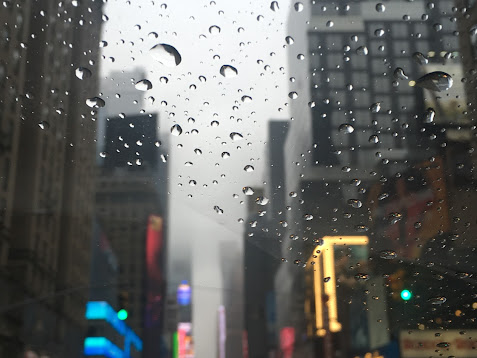by Gregory Saville
You are between fares and you are driving through hell in a yellow taxi, creeping slowly along a dimly lit downtown street on a dark, rainy night. Urban decay is everywhere around you – drug dealers, homeless tents, the stench of trash, litter and tagging everywhere, smashed store windows left unrepaired by owners fed up with the crime and fear, and cops who respond late, indifferently, or not at all.
Then you flashback to DeNiro’s famous line in Taxi Driver when his psychopathic cab driver character, Travis, expresses his disgust at the scenes passing his cab windows:
“Some day a real rain will come and wash all the scum off the streets.”
This imagery from the 1976 neo-noir film Taxi Driver emerges from the urban blight of the 1960s and 70s, especially in larger American cities suffering from the double whammy of economic depression and race riots. In truth, you might be in a taxi driving through many American cities today – San Francisco, Baltimore, Detroit, Portland, and Miami.
To many observers of urban life – and to everyday city dwellers – the reality of increasing urban blight in our downtowns is not fantasy. Homelessness, toxic street drugs, and vacated downtown shops, block after block, are the growing reality of contemporary American cities.
CONSIDER FLORIDA
Consider Florida – the sunshine state has over 3 million people in poverty, (15% of the entire state population), and over 30,000 homeless people. It hosts possibly one of the stupidest and most ineffective “anti-homeless” strategies emerging to date – playing a continuous loop of the children’s song “Baby Shark” near an urban park.
Like states elsewhere, Florida struggles with futile and ill-informed laws to criminalize begging, sleeping in parks, and panhandling, government strategies that make no lasting impact on the roots behind homelessness. These responses are contrary to the International CPTED Association's white paper on homelessness and they conjure the inhuman images emerging from 19th Century industrial London in Charles Dicken’s Oliver Twist or Jack London's The People of the Abyss.
 |
| London's Dorset Street, 1903, from Jack London's The People of the Abyss - Photo Creative Commons |
Clearly, existing urban development and crime prevention approaches in Florida, as elsewhere, are grossly ineffective against the growing blight in urban centers.
CPTED USA
It is in that context that CPTED-USA, the new affiliate chapter of the International CPTED Association, launched its latest webcast titled, “CPTED and the Revival of Urban Blight: From the 1970s Big Box Stores to 2020s Virtualization of Life”.
The webcast features the inaugural board members of CPTED USA and it is the 2nd webcast. It is the 3rd online feature of this new CPTED chapter over the past few years. The current webcast aired two weeks ago and it introduces some of the main problems with attempting to respond to the increasing urban blight with urban design without taking into consideration the deeper causes that trigger the problem in the first place.
Webcast speakers describe errors by inexperienced, or poorly trained, CPTED practitioners who fail to collect the proper data or confer with other CPTED professionals and members of the community, prior to installing their CPTED solutions. They describe government responses such as the Ostrich Effect, the Stormtrooper Tactic, versus Community-Based methods.
Over the next year, CPTED USA will grow its presence and services. As an affiliate of ICA, it already provides a bevy of services for those interested in CPTED such as training and certification, as well as access to a diverse worldwide network of professionals and highly skilled researchers.
In the months ahead CPTED USA will expand those services, including a 2024 national CPTED conference in Palm Springs, California.
Stay tuned!

Leave a comment
Please add comments to SafeGrowth. I will post everyone except posts with abusive, off-topic, or offensive language; any discriminatory, racist, sexist or homophopic slurs; thread spamming; or ad hominem attacks.
If your comment does not appear in a day due to blogspot problems send it to safegrowth.office@gmail.com and we'll post direct.